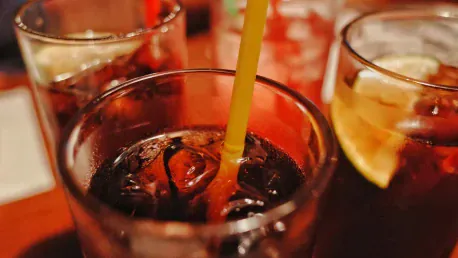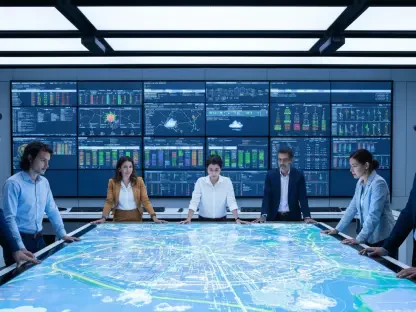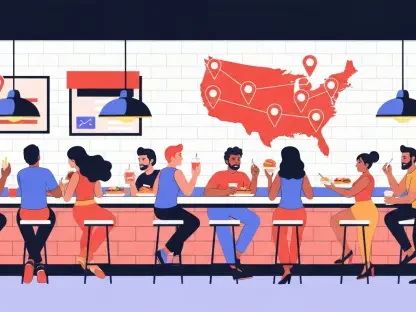The rise in the demand for nonalcoholic beverages has taken the restaurant industry by storm, altering how menus are curated and shifting the business model focus. This transformative trend is driven by heightened health consciousness, changing cultural attitudes, and economic factors impacting both consumer and restaurant behavior. As restaurants across the United States increasingly incorporate nonalcoholic beverages into their offerings, this shift is redefining the culinary experience, attracting a broader clientele, and mitigating the financial downturn from declining alcoholic drink sales.
Rising Popularity of Nonalcoholic Beverages
In 2023, the Four Seasons Hotel Philadelphia began offering zero-proof options such as Athletic Beer and Lyre’s nonalcoholic spirits, initially upon guest requests. Within a short span, the widespread acceptance and burgeoning sales of these drinks led the hotel’s beverage director, Dawn Trabing, to officially include them on the printed menus. This decision resulted in a significant boom in nonalcoholic sales. Within five months, the hotel noted a doubling of nonalcoholic drink sales compared to the previous year’s figures.
The trend observed by Trabing at the Four Seasons Hotel Philadelphia is indicative of broader patterns emerging across the United States. Alcohol sales witnessed a notable decline by 2024, impacting major global beverage companies like Diageo and other establishments dependent on alcohol sales. This shift has prompted restaurants to pivot towards nonalcoholic options to meet evolving consumer preferences. The decline in alcohol sales underscores a broader societal shift toward alternative beverage choices, spurred by multiple underlying factors.
Health Concerns and Cultural Shifts
One pivotal driver behind the increasing preference for nonalcoholic beverages is the heightened awareness regarding the health risks associated with alcohol consumption. Reports highlighting the cancer risks linked to drinking have intensified public caution. Additionally, medical treatments influencing lifestyle choices, such as GLP-1 drugs like Ozempic which reduce alcohol cravings, have also impacted drinking behaviors. The younger generation, in particular, places greater emphasis on both physical and mental well-being.
This wellness trend aligns with an overarching movement concerned with health and holistic living, facilitated by the ready availability of information online. Younger consumers are more informed and conscientious about the long-term impacts of their dietary choices, and many are consequently reducing or entirely eliminating alcohol intake. This shift in cultural attitudes is reshaping the beverage industry, driving demand for nonalcoholic alternatives, and encouraging establishments to adopt health-centric beverage programs.
Economic Pressures
Economic pressures are significantly contributing to the growing inclination towards nonalcoholic drinks. Rising inflation rates have curtailed consumer spending power while simultaneously diminishing restaurant profits. This economic strain has led to an increase in the prices of alcoholic beverages, with some regions witnessing drink costs soar to $22 or higher per glass. Elevated prices inevitably deter patrons from ordering multiple drinks, adversely affecting alcohol sales in the hospitality industry.
Potential tariffs on wine and spirits further complicate the landscape, threatening to inflate costs even more. Faced with these financial challenges, restaurants perceive an investment in nonalcoholic alternatives as an innovative solution to maintain customer satisfaction and profitability. By introducing competitively priced nonalcoholic beverages, establishments can attract a wider customer base without the economic barriers posed by the inflationary trends affecting alcoholic drink pricing.
Creative and Quality Nonalcoholic Programs
To remain competitive and appeal to health-conscious consumers, many restaurants have begun developing creative and high-quality nonalcoholic beverage programs. Fine dining establishments like Seline in Los Angeles and notable hotels like the W Philadelphia have started incorporating nonalcoholic beverage pairings. These offerings rival the complexity and quality of traditional wine pairings, featuring carefully crafted house-made concoctions with unique ingredients such as tamarind syrup, Thai chili, star anise, and fermented beets.
The meticulous attention to detail is evident in the dedication restaurants have towards these nonalcoholic programs. Delicately balanced and creatively rich drinks are designed to enhance the culinary experience, ensuring that even non-drinking patrons enjoy a premium dining experience. Such initiatives demonstrate that nonalcoholic beverages are not merely an afterthought but integral components of the overall gastronomic journey.
Enhancing Guest Experiences
Restaurants like Birdie’s in Austin have pioneered efforts to enhance the guest experience through a well-developed nonalcoholic menu. Owner Arjav Ezekiel’s commitment to ensuring all guests, including those who abstain from alcohol, have a complete and fulfilling experience exemplifies the emerging trends within the dining industry. Birdie’s boasts over 25 nonalcoholic options including Tasmanian raspberry and chamomile sparklers and Danish unfiltered koji rice wine, emphasizing the diversity and excellence aimed at inclusivity.
The success of such programs is evident in establishments like Junoon in New York, where nonalcoholic drinks constitute 30-35% of total beverage sales on any given day. These figures highlight the extent to which customers are willing to embrace well-crafted nonalcoholic options provided they are available and appealing. This successful incorporation of nonalcoholic options showcases the pivotal role they play in enhancing the overall guest experience, making dining more inclusive and satisfying.
Financial Benefits
Beverage director Jhonel Faelnar, overseeing programs at NARO, Atoboy, and Atomix, has underscored the financial benefits attributable to excellent nonalcoholic menus. He highlighted that non-drinking customers significantly contribute to overall beverage sales when presented with appealing nonalcoholic choices. This emphasizes that the presence of a thoughtfully curated nonalcoholic menu can positively impact revenue streams, compensating for declines in alcohol sales.
The evident narrative of shifting consumer preferences towards nonalcoholic beverages highlights the importance for restaurants to stay attuned and flexible. This strategic emphasis on developing and investing in nonalcoholic beverage programs is not just about diversifying menus but is central to staying financially viable and meeting evolving customer expectations. Restaurants that proactively establish these programs are well-positioned to thrive amidst changing market conditions.
A Transformative Change in Hospitality
The surge in demand for nonalcoholic beverages has dramatically impacted the restaurant industry, reshaping how menus are designed and shifting business model priorities. This significant trend is fueled by a growing awareness of health, evolving cultural norms, and economic influences affecting both consumer choices and restaurant operations. As restaurants nationwide integrate more nonalcoholic options into their menus, this change is redefining the dining experience, broadening the customer base, and compensating for the financial losses from the decreasing sales of alcoholic drinks. This shift towards nonalcoholic alternatives offers a fresh approach for restaurants to attract health-conscious patrons and adapt to the changing market landscape, ensuring they remain competitive and relevant in an evolving industry.









